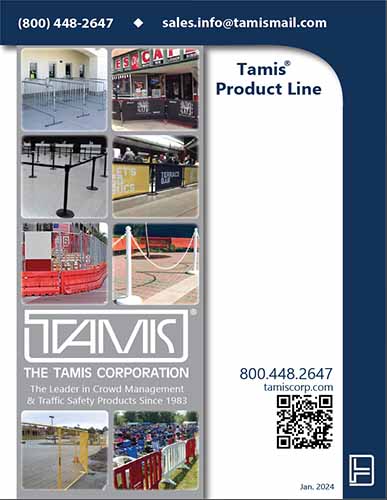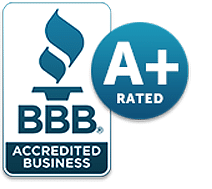A Guide Through The Steel Barrier Purchase Maze
Last updated Monday, May 30th, 2022
Wherever crowds gather, from parades to political rallies to sporting events, steel barriers are now a common sight. Event organizers, venue managers, and security personnel understand that barriers are an important part of the crowd control mix. Barriers have been among the tools used to ensure crowd management at events ranging from the Olympics to small-town festivals. As is the case with many products, there are numerous of supplier options and an extensive amount of product information available to those who are responsible for purchasing barriers.
How do you sift through all this information to choose the right barrier for your event?
How do you choose the right supplier?
Numerous factors impact both the short-term and long-term results of your purchase.
History of Crowd Control Barriers
Interlocking steel barriers were patented in France in 1951. The original “Samia” barrier was developed to meet the need to maintain safety and order during France’s social upheaval of the 1950s. This type of barricade soon became adopted for crowd control in other European countries, and eventually, the United States. Samia eventually went out of business, but many variations on its original barrier evolved over the years.
Barriers became an increasingly common sight, and without much fanfare, blended into popular culture. Americans soon got used to barriers being part of the “background” at important events. One of the earliest and most famous examples was the use of barriers at JFK Airport in New York City to control the hysterical crowds which greeted The Beatles’ arrival in the U.S. in 1964.
Distinguishing Copies
In the ensuing years, reputable suppliers have followed time-tested standards for design, alloys, and fabrication. But that hasn’t prevented other companies from attempting to swoop into the marketplace with non-standard products. There have been over 80 variations of steel barrier – of varying quality – introduced in the last five years.
So, how can a buyer tell the difference?
Part of what makes the task so difficult is that looks are deceiving. From a distance (or from a picture), different barriers may look alike, but a closer inspection will reveal quality differences. In some cases, the differences may be the result of a supplier’s lack of understanding of how the standards for a crowd control barrier have evolved over the years. But often, the differences will be the result of conscious cost-cutting measures undertaken by a supplier in order to achieve a lower selling price.
These economy measures may not always affect the short-term usefulness of the barrier, but they often influence its long-term cost-effectiveness and lifespan.
Barriers are an investment. So you have to weigh the value of the potential up-front cost-savings of sub-sub-standard copies against the drawbacks of a lower quality product and its long-term replacement costs. Barriers don’t exist in a vacuum. Even if this is the first and last time you’ll ever have to make this type of purchase, one of your predecessors has likely grasped with this decision. And one of your successors will probably also have to do so.
A supply of barriers purchased today should be compatible with your existing supply of barriers, even if they were purchased 10 years (or longer) ago. How can you be assured that you will purchase quality barriers that are perfectly compatible with your existing stock? The following checklist will help.
Dimensions Checklist
- Length: The international standard barrier lengths are 1-meter, 2-meter, and 2.5-meter (also referred to as 8-ft; actually 98 inches).
- Height: Standard height is 43 inches.
- Tubing thickness and size: Frames should be made of 16-gauge steel tubing, measuring 1.5 inches in outside diameter.
Barrier characteristics checklist
While some (but not all) inexperienced suppliers have been able to copy the above dimensions, matching the location and size of the hooks have proven to be more problematic. Hooks: If the barriers you purchase will not work (especially, not connect) with barriers already in stock, either your older or newer barriers will become “orphans.” They will either waste away in storage or, if used, compromise the integrity of your barrier lines. Hooks and receivers produced in even slightly different dimensions will not be able to interlock with your existing inventory. Also, while some fabricators may get the hook sizing and spacing right, they often do not produce hooks at a 30-degree angle with sufficient tip bending to allow for a true interlock.
Without this solid interlock, barriers can be lifted out of place by individuals in a crowd, again compromising the integrity of lines. Bases: One of the most important factors to examine (and question) is a barrier’s base. The weakest link of any barrier is its base, which is the most easily damaged component. Bases that are too light to support the frame weight will bend with repeated use. Bases that are not secured to the frame with a nut and bolt can be easily disengaged. Bolt-on, replaceable bases are a distinct advantage, as-welded bases are subject to rusting or cracking. Again, experienced suppliers will tend to offer different base options – flat bases, bridge bases, U-bases, or wheelbases, all of which offer advantages in different circumstances, and all of which are replaceable. Galvanizing: Higher quality barriers will be hot-dip galvanized after fabrication. This process protects the steel from the inside out and allows you to permanently leave or store barriers outside without the danger of rusting. Steel that is hot-dip galvanized can last up to four times longer than steel that is merely painted.
Supplier checklist
Aside from the many tangible product quality factors, a supplier’s reputation and service commitment are also valuable indicators of the level of satisfaction you will achieve. Here are some questions which can help you determine whether a company is a reputable supplier or a risky “copier”:
- Is the company a brick-and-mortar entity or an impersonal website?
- Can you speak with a person when you call with questions or for a quote?
- Does the company have inventory they can ship to you immediately, or will you have to wait for them to produce your order “on-demand”?
- Does the company have a provable track record of supplying quality products to high-profile sites or events?
Conclusion
When the proper choice is made, steel barriers can result in significant budget savings, enable more efficient use of police/security resources, and provide more safety for the public. It is becoming increasingly important, for both economical and logistical reasons, for purchasers to educate themselves about the options in front of them. Consideration of the factors discussed above will help reduce the risk of barrier buyer’s remorse.



